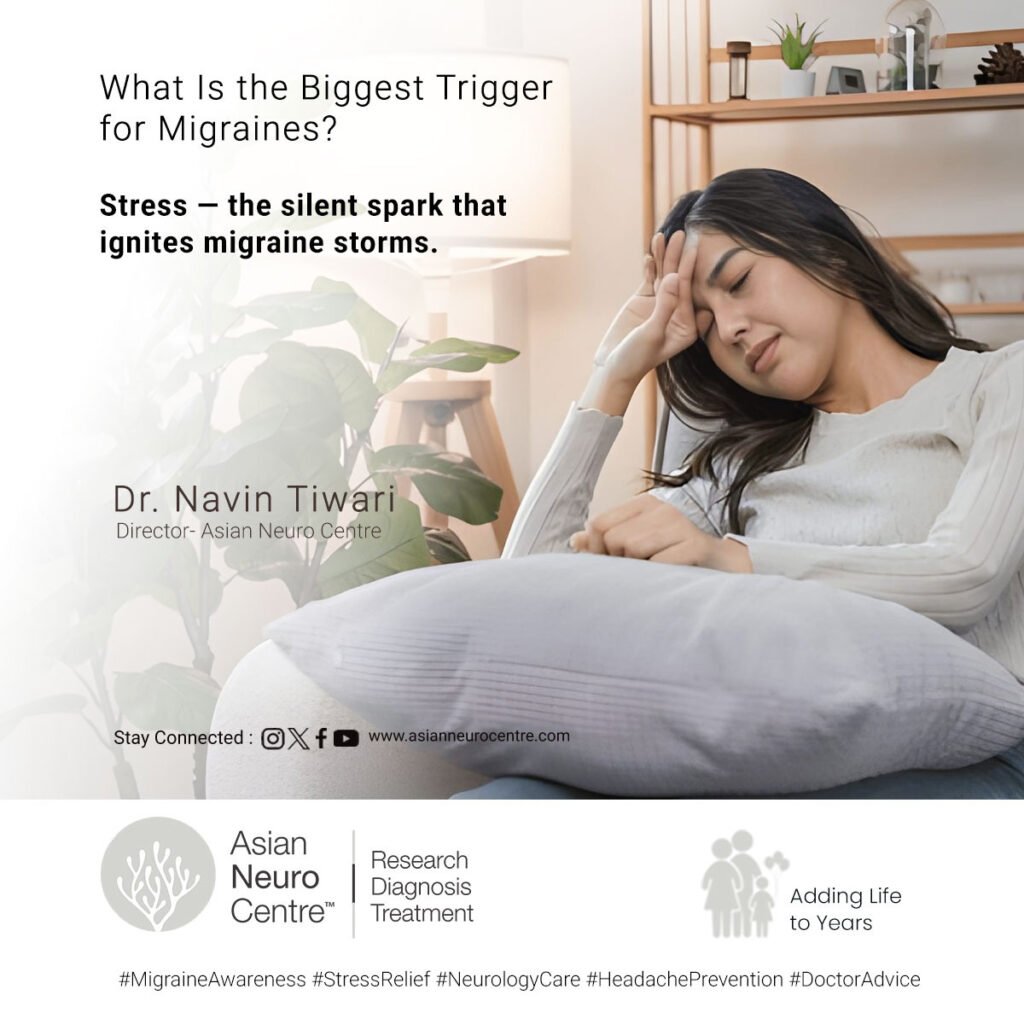- Have any questions?
- 911 12345 29
- info@asianneurocentre.com
What is the Biggest Trigger for Migraines?
What are the 5 C’s of Migraines?
October 13, 2025क्या माइग्रेन जानलेवा हो सकता है?
October 31, 2025What is the Biggest Trigger for Migraines?
- alcohol migraine trigger
- biggest trigger for migraines
- caffeine and migraines
- can dehydration cause migraine headaches
- can stress cause migraines every day
- Chronic migraine management
- dehydration migraine trigger
- does chocolate trigger migraines
- foods that trigger migraines
- headache relief tips
- headache triggers
- hormonal migraine triggers
- How common are migraines in children?
- How do you treat migraines while pregnant?
- how to avoid migraine triggers naturally
- how to cure migraine permanently
- how to identify your migraine triggers
- how to prevent migraine attacks
- is migraine dangerous
- lack of sleep migraines
- living with migraines
- main trigger of migraines
- Migraine
- migraine and blood vessel changes
- migraine and serotonin
- migraine aura triggers
- migraine awareness
- migraine caused by light or sound
- migraine causes and prevention
- migraine diary
- migraine diet
- migraine episodes
- migraine from screen time
- migraine headache causes
- migraine health
- migraine health blog
- migraine lifestyle changes
- migraine pain causes
- migraine pathophysiology
- migraine prevention
- migraine relief
- migraine research findings
- Migraine symptoms
- migraine tips
- Migraine Treatment
- migraine treatment options
- Migraine triggers
- Migraine triggers food
- Migraine triggers list
- most common cause of migraine
- neurological causes of migraine
- sensitivity to light
- stress and migraines
- throbbing headache
- top migraine triggers
- weather changes migraine
- what are common migraine triggers in women
- What are the main causes of migraines?
- What causes migraines
- what causes migraines in females
- what causes migraines in males
- what is the biggest food trigger for migraines
- what is the number one trigger for migraines
- what triggers migraine attacks
- What triggers migraine with aura
- why do migraines happen suddenly
- बच्चों में माइग्रेन का इलाज कैसे करें?
- माइग्रेन के लिए नंबर वन ट्रिगर क्या है?
What is a Migraine?
A migraine is a neurological condition far more debilitating than a typical headache. It is characterized by recurrent attacks of moderate to severe head pain that is often described as a throbbing or pulsing sensation, usually on one side of the head.
These episodes can last from a few hours to several days and are frequently accompanied by other symptoms such as nausea, vomiting, and extreme sensitivity to light (photophobia) and sound (phonophobia).
For some, a migraine attack may be preceded by an aura—temporary visual disturbances like flashing lights or zigzag lines, or other sensory changes.
Migraines are a complex condition, and an attack can be triggered by a wide variety of factors that upset the delicate balance of the brain and nervous system.

What is the Biggest Trigger for Migraines?
Identifying the single “biggest” trigger for migraines is challenging, as the condition is highly individual; what triggers an attack in one person may have no effect on another.
However, based on self-reported data and clinical research, stress is consistently cited as the most common and significant trigger for the majority of migraine sufferers.
Studies often reveal that between 50% and 70% of people with migraine report a significant association between their daily stress levels and migraine activity.
This is often not acute stress, but rather a phenomenon called “stress let-down,” where a migraine attack strikes after a period of intense stress—such as on a Friday evening after a busy work week or on the first day of a vacation.
The decline in stress hormones like cortisol may be what actually initiates the attack.
While stress is often number one, other extremely common triggers include:
- Hormonal Changes: Fluctuations in estrogen levels, particularly around the menstrual cycle (menstrual migraine), are a major trigger for women.
- Changes in Sleep Patterns: Both not getting enough sleep and getting too much sleep (like sleeping late on weekends) can trigger a migraine.
- Sensory Stimuli: Bright, flickering lights, loud noises, or strong smells (perfumes, chemicals) are common environmental triggers.
- Dietary Factors: Skipping meals, dehydration, and certain foods or additives (aged cheeses, processed meats, alcohol, and caffeine) can also be culprits.
The key takeaway is that migraine attacks are often the result of a cumulative effect—it is rarely a single trigger, but a combination of two or more factors (e.g., stress plus a skipped meal plus poor sleep) that push the brain over its individual threshold.
Conclusion
While an array of factors can provoke a migraine attack, stress stands out as the most widely reported and clinically recognized trigger. Effective migraine management, therefore, revolves around tracking personal triggers, with stress reduction techniques, such as biofeedback, meditation, and regular exercise, forming a cornerstone of the preventative strategy.
By understanding and managing their unique triggers, individuals can significantly reduce the frequency and severity of their migraine attacks.
Dr. Navin Tiwari
Consulting Neurologist
